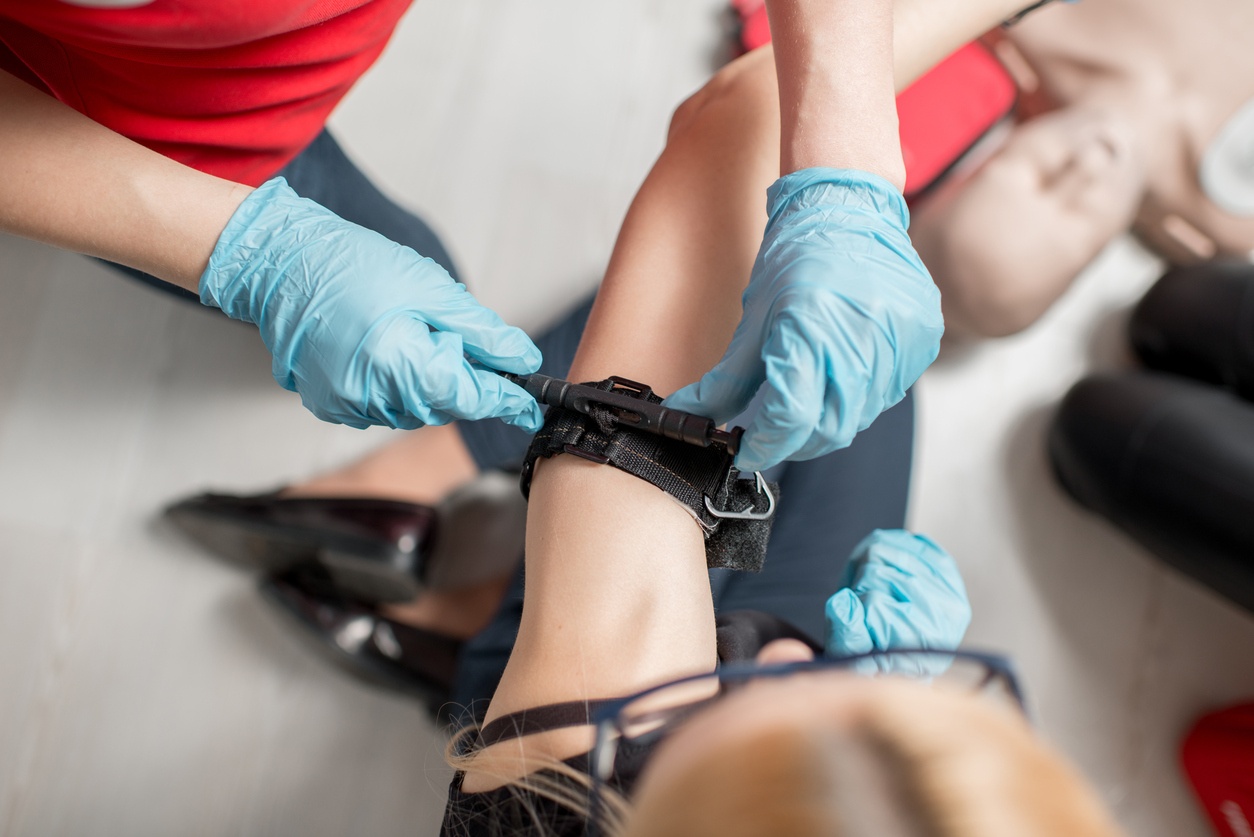
Since 2005, in the United States, unintentional injury has been the leading cause of death for people ages 1-44 years old. More often than not, bystanders are the first people on the scene when someone becomes seriously injured. Unfortunately, those bystanders may not know what to do in such a tense situation before emergency services arrive.
Stop the Bleed™ is a national campaign designed and launched by the Department of Homeland Security to educate and empower individuals to act quickly and provide immediate care in a life-threatening circumstance until the proper medical care team arrives. Through federal agencies, non-profit organizations, and corporations, Stop the Bleed has acquired resources to educate the public in bleeding control.
How to Stop the Bleed:
Serious bleeding will be red, continuously flowing, and possibly even squirting from the wound. The amount of blood to define “serious bleeding” can range from a small puddle to a large pool.
What to do if someone is seriously bleeding:
- Call 911.
- Compress – Once the bleeding site is located, apply firm and steady pressure to the site with bandages or clothing.
- Apply a Tourniquet – The tourniquet should be placed two or three inches closer to the torso from the bleeding site. Once the site is chosen, pull the strap, twist the rod tightly, and clip and secure the rod.
- Compress Again – Continue to apply pressure at the site of the wound. If the bleeding doesn't slow, apply a second tourniquet closer to the torso from the first tourniquet; once again, pull the strap, twist the rod tightly, and clip and secure the rod.
Knowing how to apply a tourniquet is a valuable skill for anybody to know. Tourniquets can truly save lives in the case of someone who is seriously bleeding. Once applied, a tourniquet should never be removed. Leave a tourniquet in place until medical professionals arrive.
Tourniquets can be found in some public places, typically located near an AED. They are also commercially available to purchase. It is possible to improvise a tourniquet from a band of material, a windlass – a rigid object to twist the material – and something to secure the windlass. (Source)
To increase the willingness of bystanders in your community to act in an emergency situation, take a course, teach a course, or host a course! As a current student at the University of Pittsburgh, when Stop the Bleed offered a training workshop to the faculty and students at the university, I decided to take part. I cannot put into words how rewarding the knowledge participants gained from this event was. I now feel comfortable and confident to act as a first-response care giver in a traumatic event to save someone’s life. Anyone can take simple actions to help save a life!
To create realistic trauma situations and teach students bleeding control, Pocket Nurse offers moulage kits, medical trauma trainers, tourniquets, and trauma manikins.
Stop the Bleed™ Resources:
https://www.ems.gov/projects/stop-the-bleed.html






